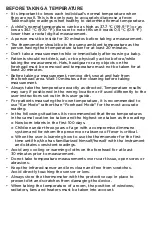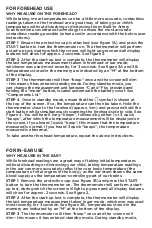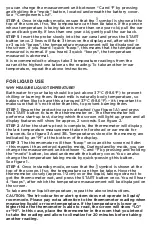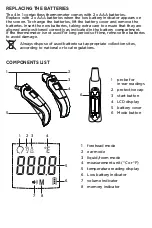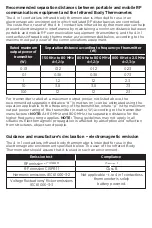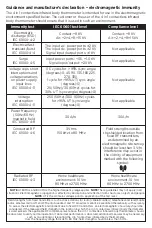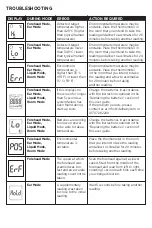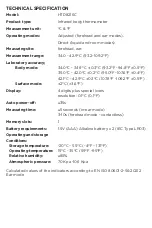
BEFORE TAKING A TEMPERATURE
• It is important to know each individual’s normal temperature when
they are well. This is the only way to accurately diagnose a fever.
Take multiple readings when healthy to determine normal temperature.
• A child’s normal temperature can be as high as 37.7 °C (99.9 °F) or as
low as 36.1 °C (97.0 °F). Be sure to note this unit reads 0.5 °C (0.9 °F)
lower than a rectal digital measurement.
• A person must be inside for 30 minutes before taking a measurement.
• The thermometer should be in the same ambient temperature as the
person having their temperature taken for at least 20 minutes.
• Don’t take a measurement while or immediately after nursing a baby.
• Patients should not drink, eat, or be physically active before/while
taking the measurement. Hats, headgear or any objects on the
forehead must be removed and temperature must not be taken for at
least 20 minutes.
• Before taking a measurement, remove dirt, sweat and hair from
the forehead area. Wait 10 minutes after cleaning before taking
measurement.
• Always take the temperature exactly as directed. Temperature results
may vary if positioned in the wrong location or if used differently to the
user instructions set out in this user guide.
• For patients measuring their own temperature, it is recommended to
use “Ear Mode” rather than “Forehead Mode” for the most accurate
reading.
• In the following situations it is recommended that three temperatures
in the same location be taken and the highest one taken as the reading:
o Newborn infants in the first 100 days.
o Children under three years of age with a compromised immune
system and for whom the presence or absence of fever is critical.
o When the user is learning how to use the thermometer for the first
time until he/she has familiarized himself/herself with the instrument
and obtains consistent readings.
• Avoid any cooling or warming cloths on the forehead for at least
30 minutes prior to measurement.
• Do not take temperature measurements over scar tissue, open sores or
abrasions.
• Keep the infrared sensor and lens clean and free from scratches.
Avoid directly touching the sensor or lens.
• Always store the thermometer with the protective cap in place to
prevent dirt and scratches from damaging the device.
• When taking the temperature of a room, the position of windows,
radiators, fans and heaters must be taken into account.




